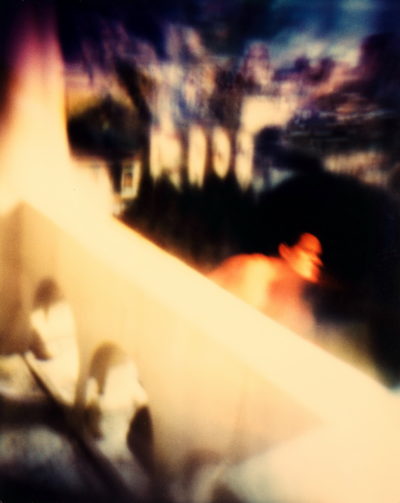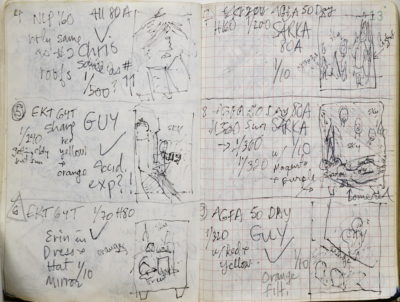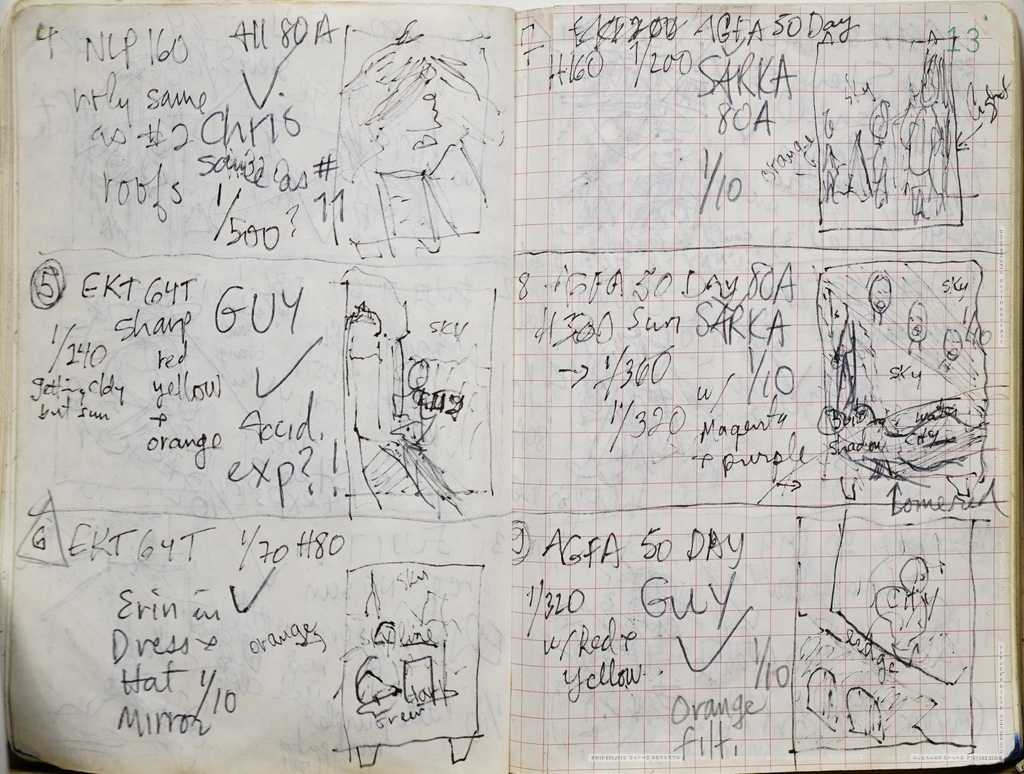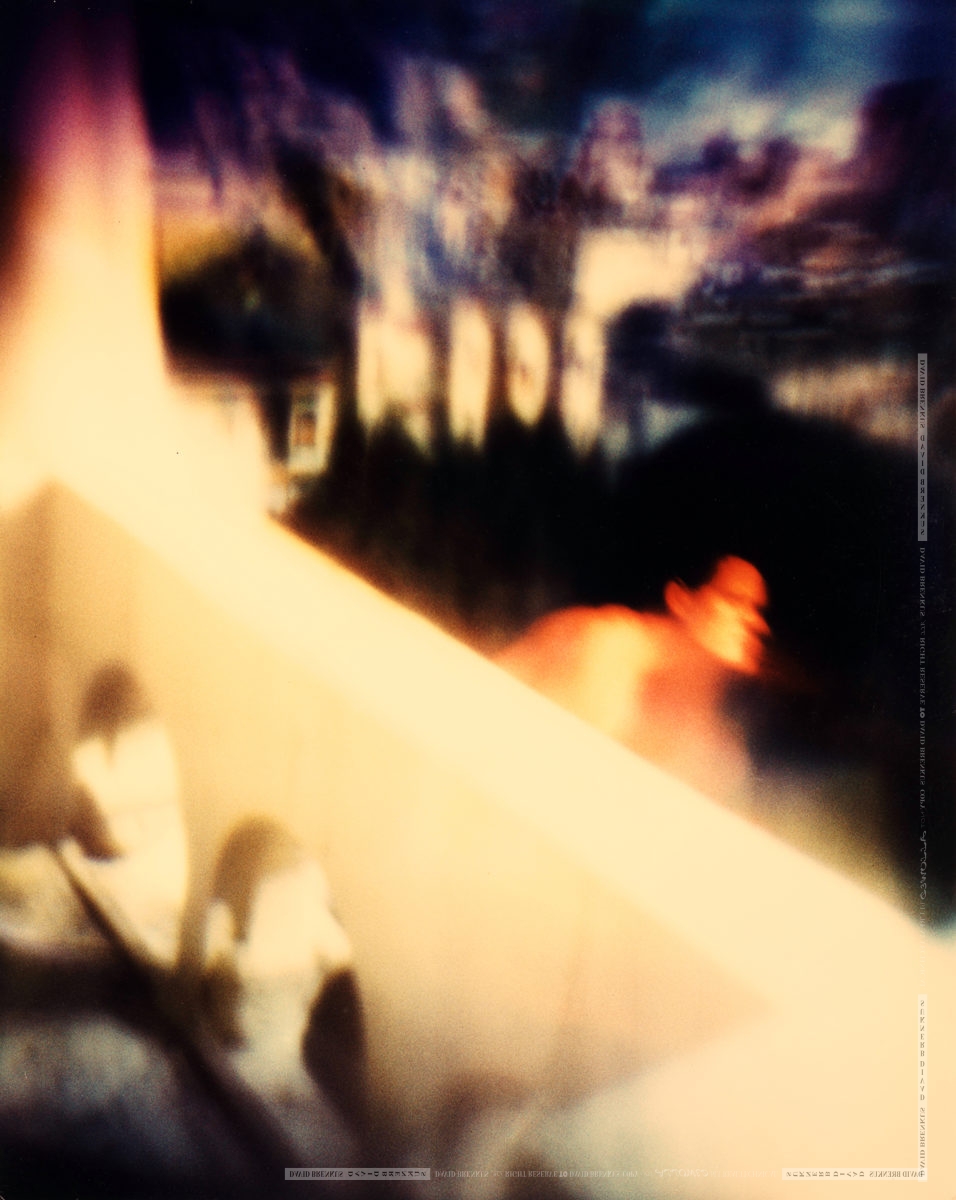MORE ABOUT MULTI EXPOSURE NON MYLAR

Gargoyle 1993
As I saw how seamlessly the Mylar reflections blended with the color nudes, my notions of what made a photo began a rapid expansion that resulted in me experimenting with many things simultaneously. You will see that I have ordered my bodies of work, but some are also groups linked to a certain general technique. I did this later in hindsight for my own convenience. Before 1993 my “projects” were chronological and sequential. From 1993 until 1997 this changed. It was an especially wild and fertile time for me. I was really trying consciously to find ways to paint using analog photography so I wanted to try out everything I could put my hands on.
The way I saw it was there was no real fundamental difference between a painting and a photograph as they are both pictures. When we see Van Gogh’s starry night, we know he had to make many brush strokes and took time to complete it, but in the end we see a picture. We perceive it as a sort of captured moment for him, though one in which the style is so expressive that it’s hard not to feel something. I saw no reason why photography couldn’t do the same – after all in a sense it grew out of and from painting. It seemed to me, that I would gain the most if I freed myself from thinking of a photograph as a moment captured by one exposure and looked upon it as a process that gives you a picture.
Multiple exposure was nothing new to photography but I thought of a way to do it differently and began experimenting. The thing that frustrated me when I made my first double exposures with a 35mm camera was how uncontrollable the process was. The second exposure could completely overwrite the first and it was impractical to return to add another exposure much later because the film was on a roll and the film winder wasn’t designed to rewind the film in registration – I tried and found it difficult. When you are lucky and it works though, the result can be mesmerizing. But by then I had worked with 4×5 sheet film for all my artwork for a few years, so I knew all I had to do was to take better records of what I’d shot on each sheet and with the addition of a simple mask, I could begin to intentionally place exposures upon the film, to layer the film with light exposures. With computers later this would have been trivial, but to do it analog it was not.

Shot_Book_8_025 (1993)
I never needed to improve the simple expedient I began with, which was to hang a small piece of black cloth in front of the wineglass lenses, from which I cut a small hole a bit smaller than an egg. I found I could increase or restrict the space on the film exposed by moving the cloth towards or away from the camera and control its placement by moving the cloth up, down, left or right.
My record keeping changed and improved as I began layering the film more. Here is a page from my shot book near the beginning of the process. You can see the crude drawing I made when I made the two exposures that made up the image I called Gargoyle (center left).
This body of work was ultimately a result of my desire to get out of the “studio” and make exposures outdoors. In the picture with Guy that I call Gargoyle, I got permission and carted my camera to a tower of a tall church in North Beach for the background. I thought if I could meld the photographic and symbolic it would be interesting to see the result.
The funny thing about making analog multiple exposures, even the way I did it is, it is both frustrating and satisfying because you really only have one shot at it working, just as with a simple photograph. The fact that I was experimenting with so many things did not make my odds go up at getting a good, balanced exposure. The miracle for me is how many pictures did turn out.


